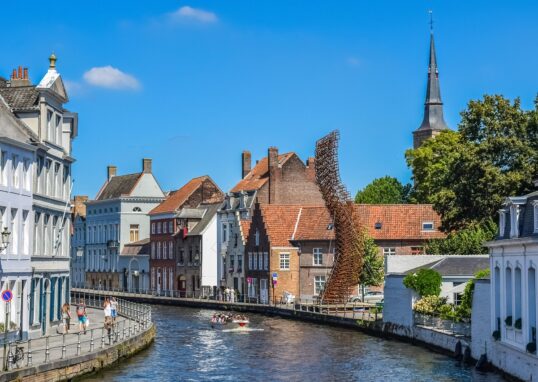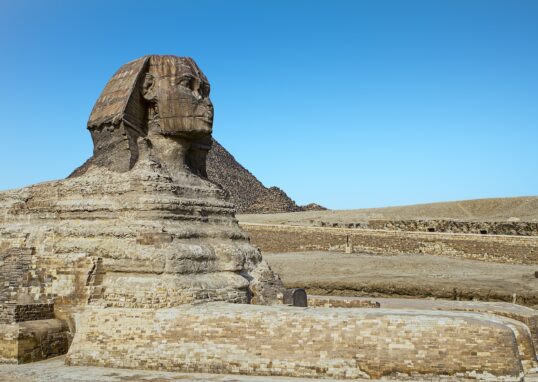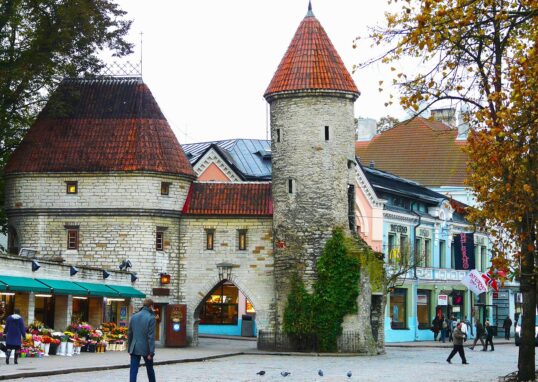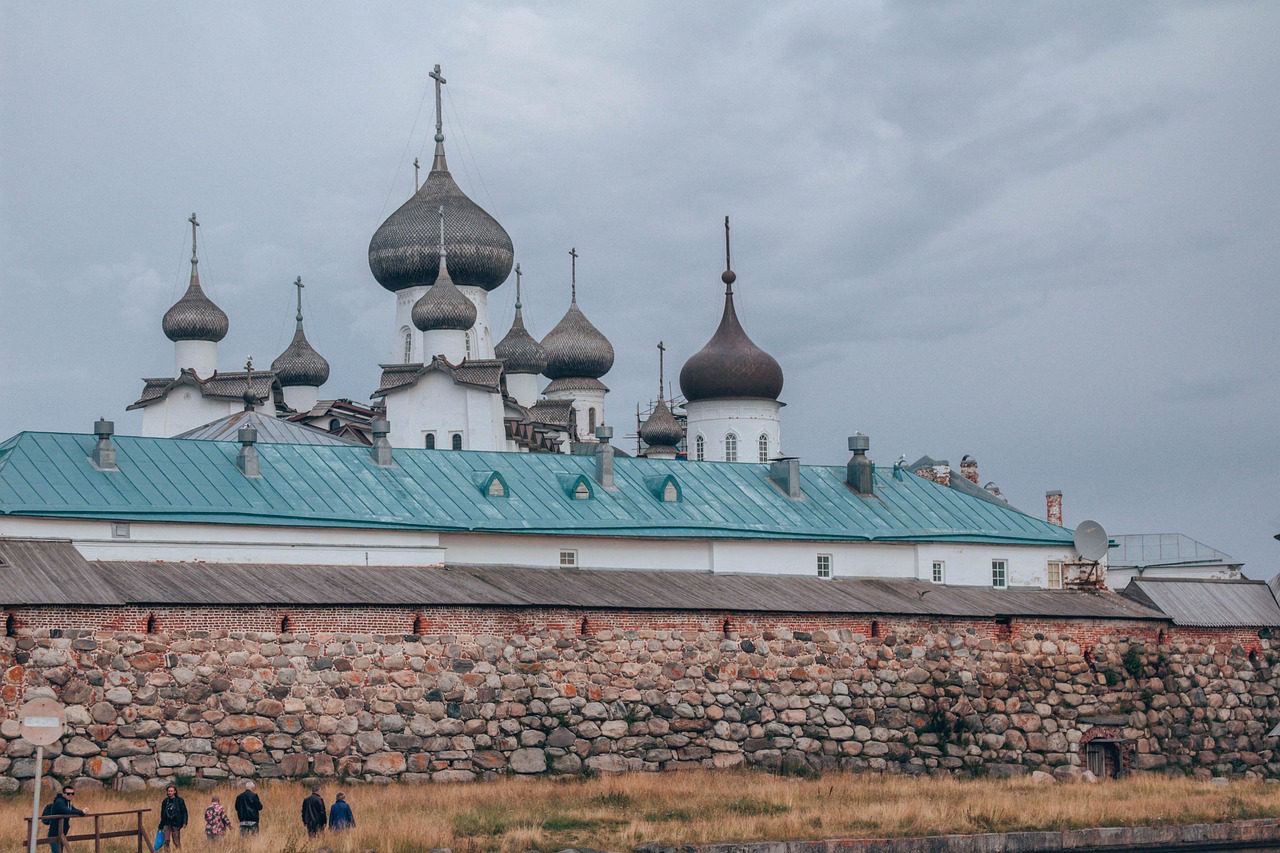
The Solovetsky Islands – A Journey Through History, Nature, and Faith
The Solovetsky Islands, also called Solovki, are among the most enigmatic and mysterious places of northern Russia. These islands are situated in the White Sea, part of the Arkhangelsk region, and include six larger islands and several smaller ones. The largest island is called Bolshoy Solovetsky Island, and it covers most of the inhabited area. These islands are famous for their rich history, ancient monasteries, beautiful northern landscapes, and their role in Russian religion and culture. Peace and tragedy have been at different times the lot of the Solovetsky Islands. Once a center of Orthodox Christianity, later to be one of the first Soviet prison camps, they stand today as a UNESCO World Heritage Site and a symbol of endurance. In this article, we will explore the geography, history, culture, natural beauty, and surrounding places of the Solovetsky Islands. The writing uses short sentences and simple words; besides, smooth transitions make this story easy to follow.
Location and General Overview
The Solovetsky Islands are situated in the western part of the White Sea, a part of the Arctic Ocean basin. They administratively belong to the Arkhangelsk Oblast of Russia. The islands lie about 165 kilometers south of the Arctic Circle and approximately 50 kilometers from the mainland. The archipelago includes six big islands and many smaller ones. The largest island is called Bolshoy Solovetsky Island, which occupies an area of approximately 246 square kilometers, making it the hub of the majority of human activity. The other major islands are Anzersky, Bolshaya Muksalma, Malaya Muksalma, Bolshoy Zayatsky, and Maly Zayatsky. All these put together form a cluster of about 347 square kilometers in total area.
Geological Structure
The base of the Solovetsky Islands consists of ancient crystalline rocks. Mostly, these are granites, gneisses, and quartzites that form a part of the Baltic Shield-one of the oldest geological structures in Europe. Over millions of years, the glaciers scoured and molded these rocks; when they melted, they left behind rolling hills, lakes, and rocky plains. The soil, thin and poor in nutrients, supports hardy northern plants like moss, lichen, and dwarf shrubs. Their relief is mostly low and flat. It reaches about 107 meters above sea level on Bolshoy Solovetsky Island. Boulders are everywhere, brought by ancient glaciers. The landscape is wild, untouched, and mysterious-looking, which adds to the islands’ charm.
Climate and Seasons
The Solovetsky Islands have a subarctic sea climate, which means long, cold winters and short, cool summers. In winter, temperatures can drop to -20°C or lower. From November to April, the ground is covered with snow and the sea freezes, making travelling very difficult. The days are short and dark, with only a few hours of sunlight. In contrast to this, summer gives way to White Nights when the sun hardly descends below one’s horizon. This season starts in May and goes into July. The temperature climbs to about +12°C to +18°C, with up to 20 hours of daylight in a day. These very long days create an atmosphere of magic, and all vegetation and living organisms are in their most vigorous growth for a brief, intensive season.
Water Bodies and Lakes
One of the most interesting features of the Solovetsky Islands is that they have a large number of lakes and channels. There are more than 400 lakes all over the archipelago; many of them are joined by artificial canals, the work of the monks centuries ago. The canals were used by the monks for carrying goods and water between the lakes. This system still works today and is considered one of the greatest examples of early northern engineering. The most famous lakes include Bolshoye Lake, Muksalma Lake, and Sredneye Lake.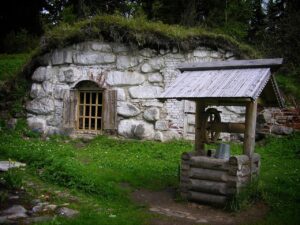
Flora – The Green Blanket of the North
Despite the severe climate, the vegetation of the Solovetsky Islands is rich and diverse. Its most characteristic feature is northern taiga occupying the greater part of the area. You may find the forests dominated by spruce, pine, and birch. The low areas have bogs and meadows with mosses, lichens, and small flowers. In tundra zones, trees shrink, and mosses take over. The ground in such areas is soft and spongy, holding water. Vegetation here is adapted to cold temperatures and strong winds, testifying to life’s persistence in the Arctic region.
Fauna – Wildlife of the Islands
Isolation and climate are the factors that make up the wildlife of the Solovetsky Islands. Large animals are rare, and there are still many interesting species to observe. In the forests, small mammals include hares, foxes, and squirrels, while there are also some rodents and weasels. Seals live in waters surrounding the White Sea, resting on coastal rocks quite frequently. Visitors can sometimes see beluga whales swimming in waters close to shore. The most noticeable island animals are birds: the cliffs and shores are used by seagulls, terns, eiders, ducks, and Arctic terns for nesting. During migration seasons, many species stop at Solovki for rest and feeding. Birdwatching is the most popular activity among nature lovers who come to the islands. 
Natural Wonders and Landscapes
The beauty of the Solovetsky Islands is in the variety of their natural surroundings. In this small area, one can find thick forests, open meadows, calm lakes, and rugged sea coasts. There is special visual harmony in the mix of rock, water, and greenery. Adding another layer of wonder, the northern light adds to the drama. In summer, the White Nights make the islands glow softly even at midnight, while in winter, the Northern Lights (Aurora Borealis) periodically dance in the sky, painting magical colors of green and purple.
Ecology and Conservation
The Solovetsky Islands are part of the State Historical and Natural Solovetsky Museum-Reserve, meaning both cultural monuments and natural ecosystems are under protection here. The goal is to preserve the unique balance of human history and the natural world. Strict rules are in place concerning fishing, hunting, and construction. Tourism is limited and guided, and it must not harm the fragile areas. Changes in climate are a growing concern. Rising temperatures and changes in ice cover may affect the local ecosystem in the future. However, the protection measures help keep the islands as untouched as possible.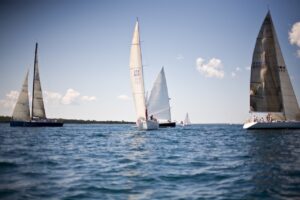
Early History and Discovery
The Solovetsky Islands have been known since ancient times. Archaeological evidence has established that already in the 5th millennium BCE, there lived people on the islands. The oldest human-made buildings here are stone labyrinths, which have survived to this day and are mainly located on Zayatsky Island. Till now, these spiral stone patterns remain a mystery: according to some, they were used in rituals; according to others, these were symbolic maps or fishing traps. During the early Middle Ages, the islands were frequented by Pomors – Russian settlers who lived on the northern coast of the White Sea. They were engaged in fishing and hunting of seal and traded with other communities in the north.
The Solovetsky Monastery
Soon enough, the Solovetsky Monastery became one of the most important monasteries in Russia. It was not only a place for faith but also a center of education, trade, and architecture. Constructed most from stone, it has thick and solid walls that are both beautiful and defensive. The monastery complex includes churches, towers, and cells for monks. Among the most famous ones are: the Cathedral of the Transfiguration, the Assumption Church, and the Bell Tower. The monastery was also surrounded by a large fortress wall, which protected it from attacks. Since the 16th and 17th centuries, this monastery played an important role in Russia’s defense. It functioned as a fortress against all invaders from Sweden and also from the north. It also served as a place of exile for political prisoners and religious dissidents.
The Soviet Era and the Solovki Prison Camp
In 1917, when the Bolsheviks seized power, the monastery was closed, and its buildings turned into one of the very first Soviet prison camps-the Solovki Special Purpose Camp, SLON-a part of what later developed into the Gulag system. During the 1920s and 1930s, Solovki received thousands of prisoners: intellectuals, writers, priests, and political opponents. Many died from cold, hunger, or hard labor. The camp became a symbol of suffering and human endurance. Today, part of the monastery serves as a museum and memorial to those who perished there. After the Second World War, the islands were used as a naval training base and later as a museum complex. In 1992, UNESCO declared the Solovetsky Monastery and the islands a World Heritage Site.
The Solovetsky Islands Today
Today, the Solovetsky Islands are both a religious center and a tourist destination. The monastery has been partially restored and is once more active. Monks live and work there, and religious services are held regularly. Tourists come to the islands to see the monastery, explore nature, and learn about the history of the Gulag. Most of the cultural and natural monuments of the islands are managed by the Solovetsky Museum-Reserve. The tourists can visit old churches, walk in stone labyrinths, and view the remains of the prison camp. It receives visitors during summer, brought by boats from Kem or Arkhangelsk. In winter, it is hard to travel due to ice and storms. Yet, the beauty of Solovki in every season attracts those who look for peace, history, and reflection.
Cultural Heritage and Traditions
The Solovetsky Islands are closely connected with the traditions of Russian Orthodoxy. Pilgrims from every corner of Russia come to the monastery to pray and honor the memory of the saints who lived here. The annual Zosima and Savvatiy Festival celebrates the founders of the monastery with processions, prayers, and special church services. The culture also includes local crafts. Islanders create wood carvings, paint icons, and make handmade souvenirs.
Nature and Wildlife
The Solovetsky Islands are not just a place of faith and history but also a natural paradise. The islands are covered with dense forests, quiet lakes, and bogs. More than 400 lakes are scattered across the islands, many of them connected by small rivers and channels built by monks centuries ago. It is rich in birdlife. The islands house seagulls, eiders, ducks, and Arctic terns. During periods of migration, rare species appear, making the islands a tremendous place for birdwatching. Seals can be found in the sea around them and sometimes beluga whales. The natural landscape is in constant transformation through the seasons. In summer, flowers bloom on the islands. In autumn, forests turn golden. In winter, snow and ice provide a peaceful white silence. Every season has its own beauty.
Architecture and Monuments
The architecture of Solovki represents the combination of religious design and northern strength. The main monastery complex of stone walls and onion domes proudly stands near the sea. The fortress walls are up to six meters thick and built from boulders. Inside, it houses chapels, refectories, towers, and small gardens. Other important buildings include the Canal System, which was constructed by monks to connect lakes for water transport. This showcases their ingenuity in engineering and their willingness to put in hard work. Outside the monastery, visitors can see wooden chapels, ancient stone crosses, and labyrinths on Zayatsky Island. The labyrinths are designed as circular paths of stones and represent one of the oldest archaeological findings in northern Russia.
Tourism and Visitor Experience
Tourism in the Solovetsky Islands is special. The islands are worth visiting for spiritual travelers and ecotourists alike. Visitors can stay in small guesthouses, monastery hotels, or local homestays. Local guided tours explain not only the history of the monastery and Gulag but also of the natural environment. The best time to visit is from June to August, when the weather is mild and boats operate regularly.
- Popular activities include: Visiting Solovetsky Monastery.
- Zayatsky Island and his stone labyrinths: A boat trip on the lakes, Seal watching along the coast, Walking the forest trails, Visiting the Museum of History and Culture. Tourism is handled with care so as not to destroy the islands’ fragile nature and cultural heritage.
Surrounding Places and Attractions
The Solovetsky Islands are surrounded by beautiful and historical places in northern Russia. Visitors often combine their trip in conjunction with nearby destinations such as:
Kem
Kem is a small town on the White Sea coast, the main departure port of boats to Solovki. It has some wooden houses, a peaceful harbor, and the Kemsky Pogost Church, an old wooden church from the 18th century. Normally, travelers spend a night here before taking the ferry to Solovki.
Arkhangelsk
Arkhangelsk is a great city, some 500 kilometers east of Solovki, and is known as the “Gateway to the Arctic.” Not only does it house many museums, such as the Museum of Wooden Architecture and the Maritime Museum, but the city also offers views along the Northern Dvina River and even historic buildings from the 18th century.
Karelia
Another area of superlative natural beauty is the region of Karelia, which lies south of Solovki: all lakes, forests, and traditional wooden villages, including the famous UNESCO World Heritage Site of the wooden churches on Kizhi Island. Many nature-loving visitors combine both Kizhi and Solovki on one journey to the north.
White Sea Coast
The entire coastline of the White Sea is rich in wildlife, fishing villages, and old Pomor culture. You can visit Belomorsk with its rock carvings or Severodvinsk, a naval city with Soviet history. The White Sea area gives travelers an impression of Arctic wildness.
Conclusion
It is on the Solovetsky Islands that nature, history, and faith come together. From ancient stone labyrinths to grand monastery walls, each corner tells a story. The islands remind a visitor of human strength and the beauty of isolation. Despite the isolation, the Solovetsky Islands are strongly connected with Russian culture. The islands are not only a witness to the past but also a sign of hope and peace. Whether for religion, history, or nature, Solovki offers an unforgettable experience. Visiting Solovki means actually traveling in time: the quiet sound of waves, the call of seabirds, and the golden domes of the monastery under the Arctic sky comprise a view which one will never forget. The Solovetsky Islands are truly one of the world’s most remarkable places-a treasure of the North.


